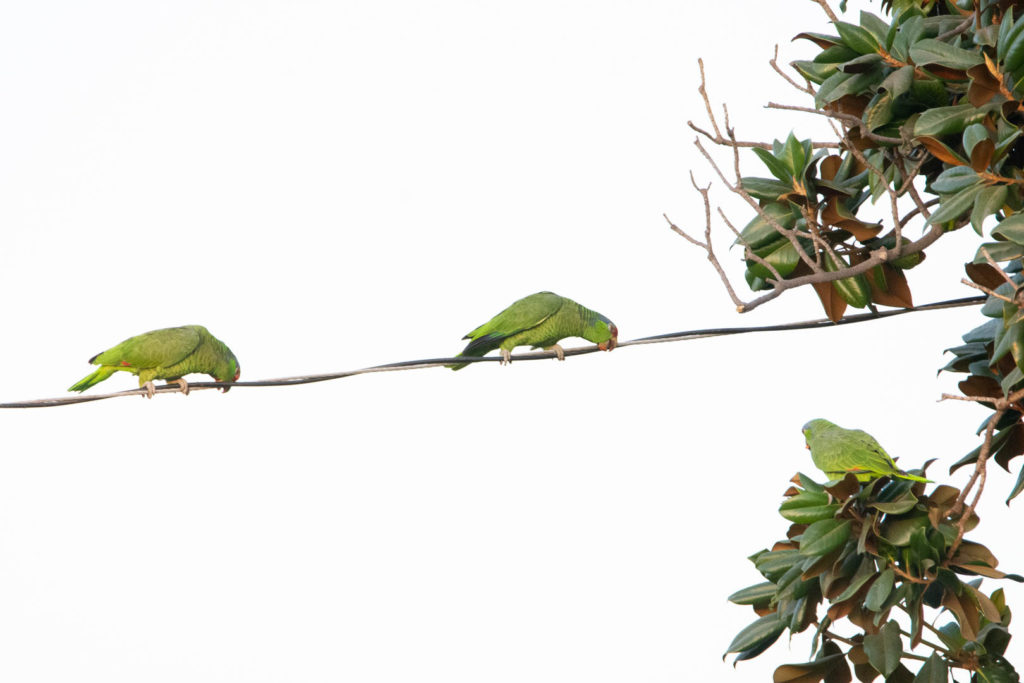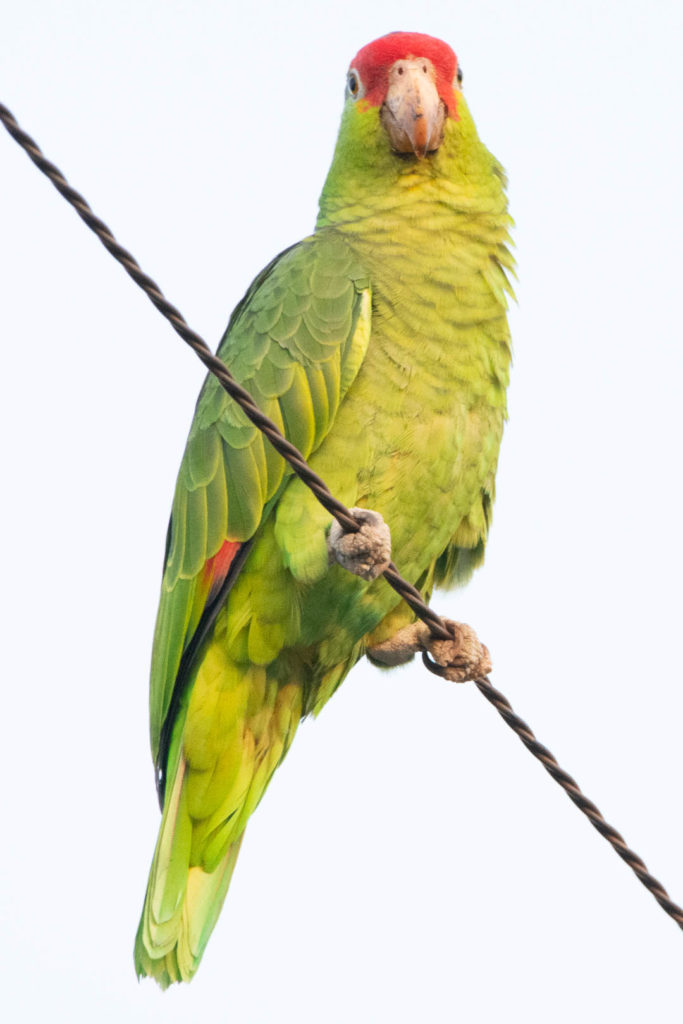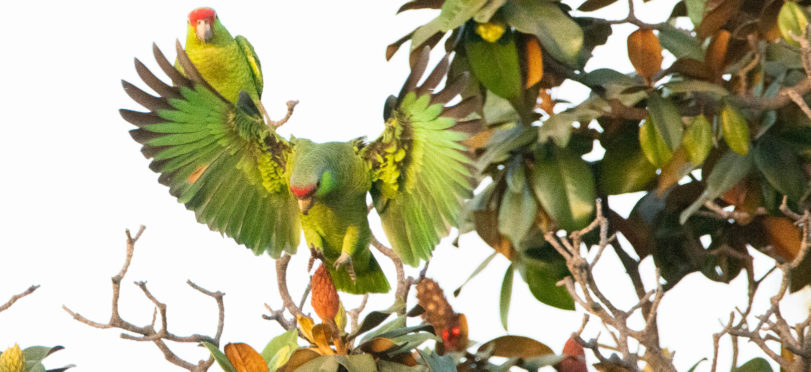I was watching coverage of the presidential election and I noticed a bunch of parrots. No, not the ones in the national media, but real ones, colorful ones, through our backyard, beyond the house behind, in branches of the trees in a neighboring street. They were beautiful and talkative.

Even with the TV volume up pretty high, and the windows closed and their distance, I could hear them clearly. My first thought was that the gossip in the trees across the street from bird to bird had to be much more of a scoop than what the parrots were saying on TV. So, as any curious investigative journalist would do, I went to get my camera, chose the appropriate lens, a 5.6 150-600mm, connected it to the body of the camera and went on the hunt.
The Red-Crowned Amazon Parrot is native to north-eastern Mexico and southeastern United States, according to *Wikipedia. The site says there are only 1,000 to 2,000 of these birds in the wild. Observation from my backyard makes this highly unlikely, with thousands of these noisy critters flying overhead. The difference may be that the birds flittering above are fugitives, along with their offspring, from the pet-trade, and the count of natural-habitat birds are in major decline. Although there are those that believe that the colorful creatures migrated from the Mexican Jungles, according to experts, this is highly unlikely.*

I scanned the trees and saw a parrot I could probably get at the edge of my focal length, which means I could get a half-way decent shot, but there was no room for mistakes or even for cropping later without losing quality, to get a closer view. It was around 5pm and was getting a little dark. I turned up the speed and the ISO to make sure the lighting was just right. Click. Click. Click. Oooops. Not in continuous servo; remedied. Then, bursts. Adjustments. Lighting good. Later, the pictures you see here required almost no adjustments in Lightroom.
What was one bird turned into 30 and then, almost a hundred or so, flying overhead. Some landed on the trees in front of me. I pushed the shutter button, bursts. Birds landing and taking off. The Red-Crowned Amazon is a beautiful bird that stands about 13” tall. It gets its name from a red “crown” on its head, but it is a green bird with yellow cheeks and what appears to be a grayish blue strip just behind its eyes. Parrots were flying overhead in military formation, cawing intelligence from the other side of the city, I was sure.

Two of these cawing wisecrackers landed on wire, no doubt, bringing cable entertainment to those in the house below oblivious of the amusement happening above, began doing a little vaudevillian dance from one end of the wire to the other, scraping their beaks from one end and down the other. Some would say they were sharpening their beaks and loosening the lunches’ residual from their bills, but I know they were doing their act just for the guy holding the camera in the yard behind theirs. I wish I could hear the song that had to be playing in their heads to get them to move in such a funny way. This will have to go down as life’s little mysteries, thought.
All of the sudden, another flyby! This time, the caws were louder and nearly made me jump out of my skin and drop the camera to the ground, if it wasn’t attached to the strap around my shoulder. They came out of nowhere and rivaled any Thunderbird at an airshow. This, of course, was nature’s airshow, orchestrated by nature’s God, and I was lucky enough to enjoy it. My lens was pointed toward the sky, but I just seemed to miss each bird as he flew by. They must have been on a top-secret mission and didn’t want their picture taken at this time. Perhaps I’ll get a good shot of them in flight and post it here when it is available.

As I was taking pictures of the flock of what had now grown to hundreds of birds, one landed close to me on a wire about 10 feet in front of me, and about 20 ft. above. As a photographer, there are few rules of the trade that are important, no matter how long your lens, as being as close as possible to the subject. I was excited as I snapped a few captures and could see that they were pretty good. But, as I looked through the lens without thinking about taking a shot, the parrot seemed stared back at me.

It was as if he was trying to figure out if I was friend or foe. After a few minutes, I guess he determined I was not a threat and just sat on the wire for a while. I would like to think we had a good meeting and, perhaps the next times I am in the back yard, my new friend would come back and say hi again.
They live in maple and pine trees.
*Red-Crowned Amazon general information





